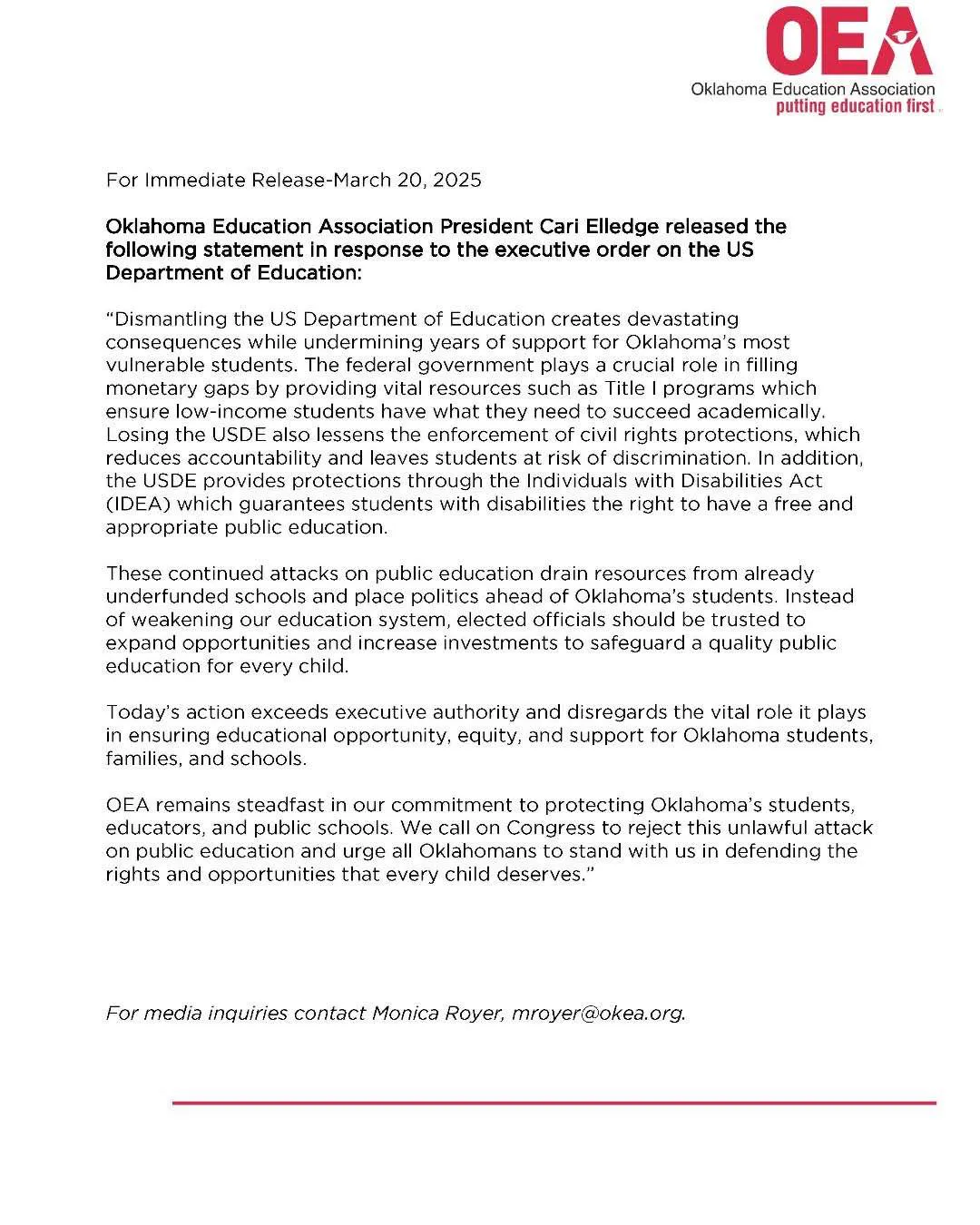What to know about the U.S. Department of Education
President Trump signed an executive order directing Secretary of Education Linda McMahon to take steps toward closing the Department of Education, though congressional approval is required for full elimination.Thursday, March 20th 2025, 5:25 pm
On Thursday, President Trump signed an executive order directing his Secretary of Education, Linda McMahon, to “take all necessary steps to facilitate the closure of the Department of Education and return education authority to the states, while continuing to ensure the effective and uninterrupted delivery of services, programs, and benefits on which Americans rely.”
This action fulfills a pledge Trump frequently made during his campaign to eliminate the department, asserting that the Biden administration had used it to promote a progressive ideological agenda. Secretary McMahon acknowledged during her confirmation hearing that it would take an act of Congress to actually abolish the department.
Key Facts About the U.S. Department of Education:
1. Establishment of the U.S. Department of Education
The Department of Education was established by Congress in 1979 to ensure all Americans have equal access to education. Congress found that education was essential to the development of individuals and the country as a whole—and that no one should be denied access to quality educational opportunities due to their race, creed, color, national origin, or sex. The department was tasked with expanding educational access for all, supporting state and local education efforts, encouraging community engagement in education programs, and conducting research to improve education quality. At the time, approximately 31% of Americans had completed some form of postsecondary education; that number has since increased to 62%.
2. What Does the U.S. Department of Education Do?
The department ensures equal opportunity, conducts research to maintain education quality, and administers grant programs to supplement school funding. In fiscal year 2024, the Department of Education accounted for about 4% of all federal spending.
Some of the department’s primary responsibilities include:
- Enforcing civil rights laws to ensure equal access to education for all students.
- Conducting research that leads to evidence-based practices and policies in education.
- Administering the $18.4 billion Title I program that provides funding to districts serving high volumes of low-income students to offset state and local funding disparities.
- Providing $14.2 billion to states and districts for the Individuals with Disabilities Education Act (IDEA), which supports the education of more than 7.5 million students with disabilities.
- Operating the $1.6 trillion federal student loan program, which makes it financially possible for tens of millions of Americans to access higher education.
3. What Does the U.S. Department of Education Not Do?
The Department of Education does not set curriculum or manage all education matters across the country. Just as most states and local governments provide the bulk of funding for their schools, they also determine, in large part, how schools are staffed, what courses are taught, and what the standards are for graduation.
4. The U.S. Department of Education Cannot Be Eliminated Through an Executive Order
Only Congress has the authority to abolish the Department of Education since it was created through legislation in 1979. This power is granted to Congress by the Constitution. Legislation abolishing the department would require a minimum of 60 votes in the Senate. Republicans currently hold 53 seats in the Senate.
5. Department of Education Employees
Secretary McMahon initiated a Reduction in Force (RIF), effective March 21, impacting nearly half of the department’s workforce. When President Trump took office, the Department of Education employed 4,133 workers. Following the RIF, and combined with about 600 voluntary resignations, the workforce will drop to about 2,200—less than one-tenth of 1% of the approximately 3 million Americans employed by the federal government.
The University of Oklahoma released this statement on the Department of Education Executive Order:
I am reaching out today to address the recent executive order from the federal administration regarding the U.S. Department of Education. While the specifics of the order are being reviewed, we understand that many of you may have questions about its potential impact.
Currently, we do not anticipate any immediate disruption to financial aid availability. Students should continue to file for aid as usual through FAFSA. We are actively monitoring the situation, and the Student Financial Center in Buchanan Hall will continue assisting students through the financial aid process. For the most up-to-date information, visit ou.edu/sfc, or follow the latest university information related to all executive orders at ou.edu/resources/executive-order-faq.
We know this remains a time of great change. We are working with all our contacts to stay informed and to provide you with the most up-to-date information. In the meantime, we will continue to advocate for policies that support our students, faculty, and staff.
Thank you for your continued dedication to our university’s mission.
Live On, University,
Joseph Harroz, Jr.
President
The Oklahoma Education Association President Carl Elledge released this statement:

More Like This
March 20th, 2025
March 20th, 2025
March 20th, 2025
March 20th, 2025
Top Headlines
March 20th, 2025
March 20th, 2025
March 20th, 2025
March 20th, 2025










